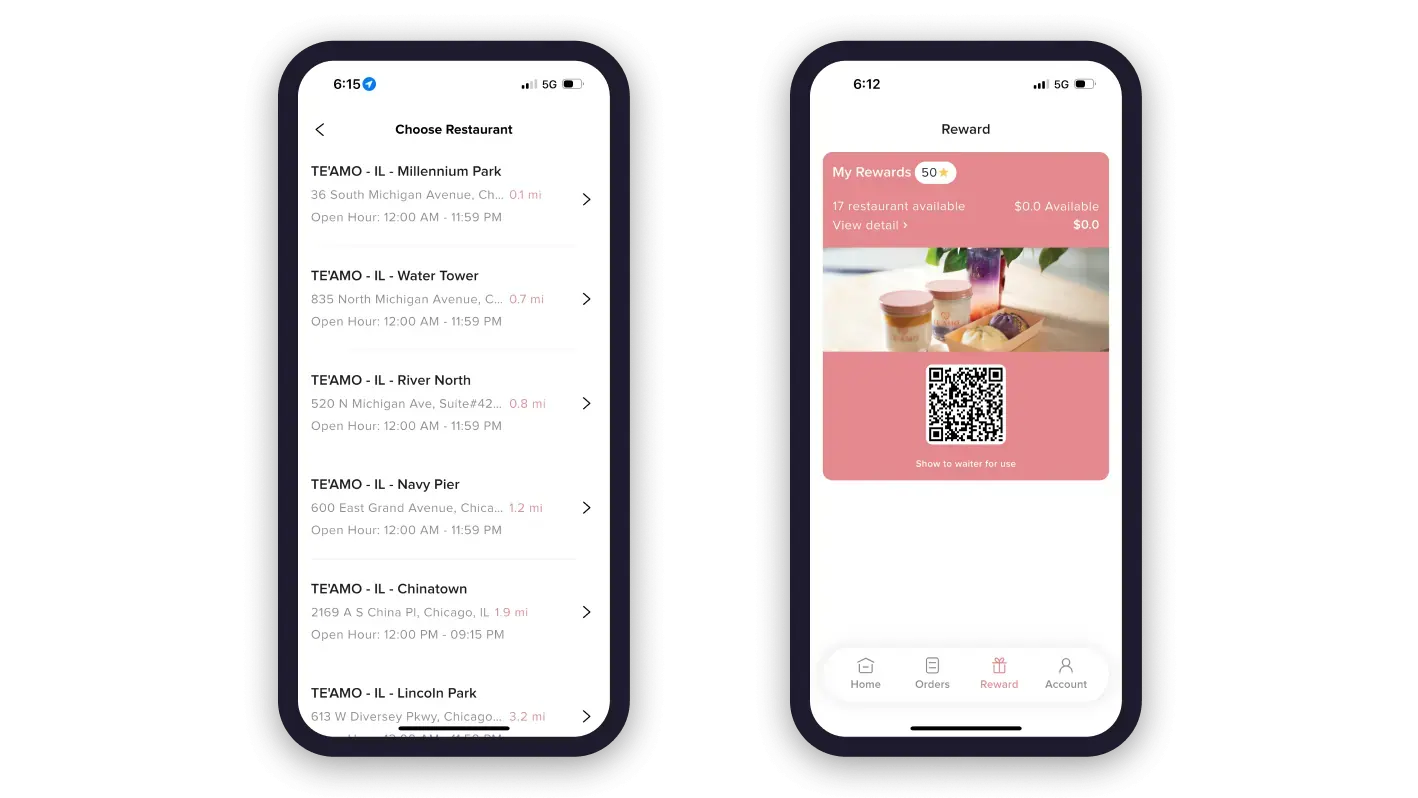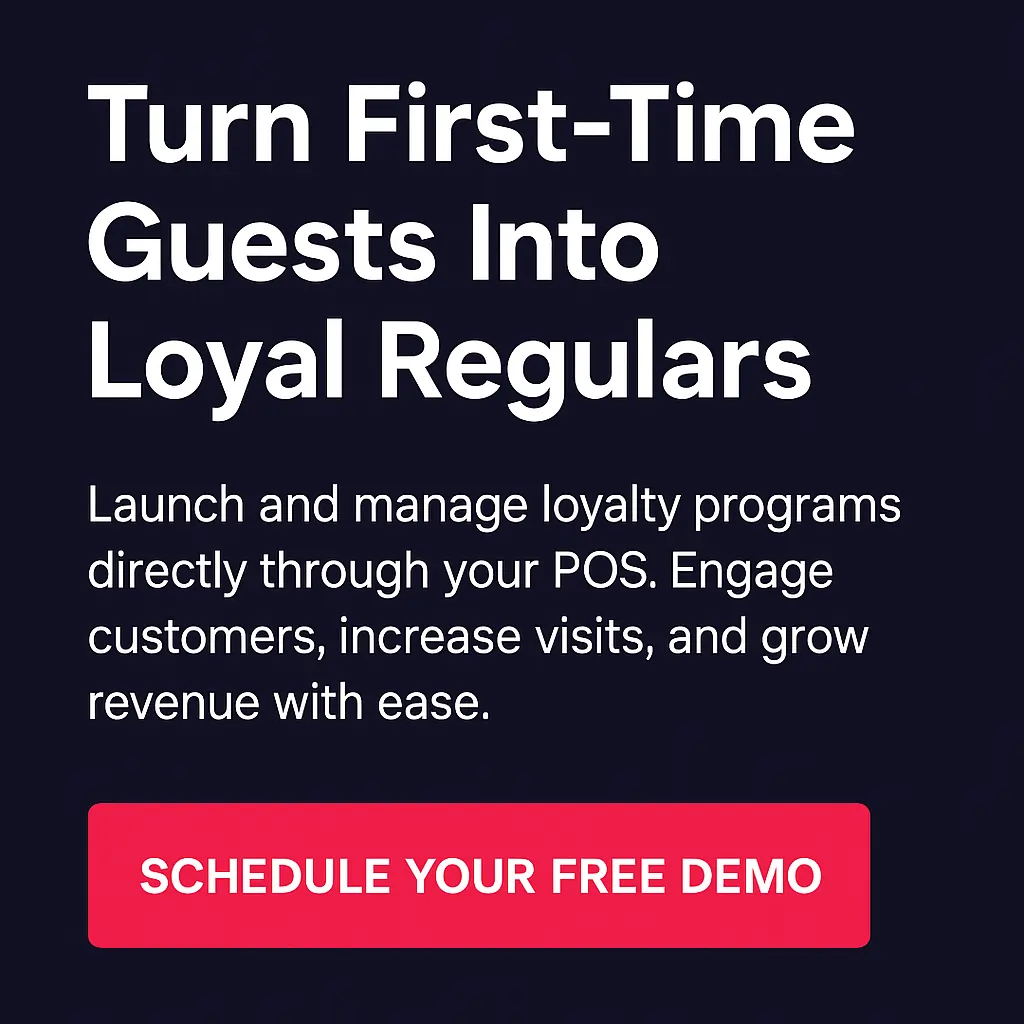
Bringing guests back takes more than great food. With rising costs and tighter margins, building repeat business is key. Loyalty programs offer a direct way to increase customer retention, drive more visits, and grow revenue without incurring additional expenses on third-party platforms.
This guide walks you through the types of loyalty programs that are most effective for restaurants today. You’ll learn how different formats work, when to use them, and how to manage them through a POS. If you’re exploring the types of customer loyalty programs to improve guest relationships and sales, you’re in the right place.

Loyalty programs reward repeat customers and make it easier to bring them back more often. With so many formats available, the right approach depends on how you operate, what kind of relationship you want with your guests, and how much flexibility you’re looking to offer.
So, what are the different types of loyalty programs, and how can they help increase guest frequency?
Here’s a breakdown of the most effective formats used in restaurants today, along with when and how they’re typically applied.
Guests earn points for every dollar they spend. These points can be redeemed for rewards like free items, discounts, or exclusive offers.
Example: Offer 1 point per $1 spent. Guests can redeem 50 points for a free drink—keeps the reward loop tight and engaging without complicating operations.
Instead of tracking how much customers spend, this model rewards them based on how frequently they visit. It’s simple, consistent, and effective for regulars.
Example: A “buy 9, get the 10th free” stamp card (digital or physical) to reward regulars for showing up often.
Guests unlock new perks as they spend more or visit more often. These tiers can include multipliers, exclusive items, or access to VIP experiences.
Example: A sushi bar offers Silver, Gold, and Platinum tiers with higher rewards, bonus point rates, and early access to seasonal dishes.
Guests pay a recurring fee (monthly or annually) in exchange for special perks. This model builds commitment and delivers predictable revenue.
Example: A hot pot restaurant offers a $28 annual membership that includes exclusive menu access and a complimentary birthday meal.
This format gives guests store credit or discounts based on what they spend. Rewards are instant and easy to understand, great for boosting short-term repeat visits.
Example: Spend $50, receive $5 in loyalty credit for your next visit, tracked automatically at checkout via the POS.
Multiple local businesses collaborate on a shared loyalty system. This gives guests more ways to earn and redeem points—without businesses competing directly.
Example: A neighborhood café partners with a nearby bakery. Customers earn points at either location and redeem them across both.
Each program type supports different business goals, whether that’s lifting visit frequency, driving spend, or building stronger guest relationships. You can also combine models (e.g., visit-based + cashback or tiered within points-based) to tailor loyalty experiences without overcomplicating operations.
With the right tech stack, such as a loyalty-ready POS, you can easily manage, track, and optimize whichever model best fits your brand.

The right loyalty program depends on how your restaurant operates, what your customers value, and how your team manages guest engagement. Exploring the types of customer loyalty programs available helps align your strategy with your brand goals.
Start by focusing on three key areas:
Are your guests primarily regulars, deal-seekers, or first-time visitors?
Your format influences what works best.
A strong POS system makes loyalty programs easier to manage.
No single format works for every restaurant. You can combine different types of loyalty programs to support various guest segments. For example, offer a free entry-level program to encourage signup, then provide paid tiers or top-up options for more frequent diners.
Keep it simple for your team and easy for your guests. Let your loyalty program grow with your business.
Modern POS systems simplify the management of loyalty programs by consolidating every aspect of the process, from sign-up to redemption, into a single platform. Instead of juggling manual records or separate tools, everything runs through the same system your team already uses to take orders and process payments.
Here’s how POS-driven loyalty programs work across different types of loyalty strategies:
1. Integrated Sign-Ups Across Channels
Guests can register through kiosks, QR code menus, tablets, or directly at the counter. The system captures phone numbers and automatically links orders to the member account. No extra app or punch card needed.
2. Real-Time Tracking and Redemption
Points, discounts, or cashback apply automatically once a member logs in. Staff can view available rewards during checkout, apply them instantly, and even adjust balances if needed.
3. Customizable Loyalty Rules
You control the details:
4. Cross-Store Membership Options
If you run multiple locations, members can earn and redeem benefits at any store. You can keep rules consistent or let each location offer its own member deals and redemption values.
5. Personalized Marketing and CRM Integration
With Chowbus POS, you can send SMS or MMS campaigns based on visit frequency, last order date, or membership tier. Schedule messages to reconnect with inactive members or promote limited-time offers.
6. Performance Insights
View loyalty engagement in your dashboard: new registrations, repeat visits, inactive members, and redemption rates. These reports help you understand what works and where to adjust.
Tech-savvy restaurateurs increasingly rely on POS-driven types of restaurant loyalty programs to gain a competitive edge. It’s easier to manage, easier for your team to use, and more rewarding for your guests. Whether you use points, cashback, or paid memberships, the right POS system ties it all together.
Building repeat business today means giving guests a reason to return beyond the menu. The right loyalty strategy can lift visit frequency, improve spend, and create stronger customer relationships without increasing your marketing costs. By using the types of customer loyalty programs outlined above, you can create a system that fits your concept and revenue goals. A strong POS makes it easy to manage, track, and optimize all these different types of loyalty programs from one place.
Chowbus POS makes it simple to launch and manage types of restaurant loyalty programs that drive repeat visits and long-term revenue. Set up free, top-up, or annual memberships, offer member-exclusive pricing and cashback, and let guests store e-membership cards in Apple Wallet for automatic reminders when they’re nearby. Use built-in CRM tools to send targeted SMS or MMS campaigns to reconnect with past members and promote special offers across all your locations.
Book a Free Demo with Chowbus POS today and see how easy it is to build a loyalty program that grows your customer base and keeps guests coming back.

Choosing the right loyalty program starts with knowing what options exist and how they work. Below, you'll find quick answers to common questions to help you explore which approach best fits your business.
The four main types of loyalty programs are:
Points-based programs remain the most popular type of loyalty program. Businesses favor them for their simplicity and effectiveness, while members enjoy the clear, tangible rewards they earn for their purchases. You commonly find these programs with airlines, retailers, and coffee shops.
Loyalty system tiers are membership levels that reward customers based on their spending or engagement. Common tiers include entry-level (e.g., Bronze), mid-level (e.g., Silver), and top-level (e.g., Gold or Platinum). Higher tiers offer greater benefits, encouraging repeat purchases and brand loyalty.
A popular example is Starbucks Rewards, where customers earn points (Stars) for every purchase and redeem them for free drinks or food.
Yes, there are several types of loyalty, including transactional loyalty (based on repeat purchases), emotional loyalty (driven by brand connection), and behavioral loyalty (based on customer habits). Each type plays a role in how loyalty programs engage and retain customers.
For more insights, updates, and loyalty tips, check out our blog section regularly.

Recommended Articles: